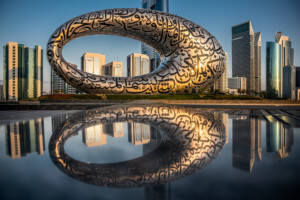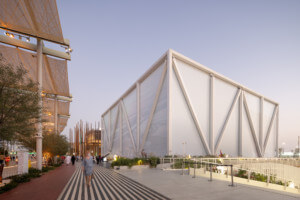Unearthly, peaceful, and removed from reality. This captures our experience traveling as part of the United States cultural program at the Expo 2020 Dubai. We were distracted by a spectacle within the bounds of a bubble. Like bit players in The Truman Show, we were trapped on an island. Our news feed and normal time zones were suspended.
As scholars and designers who study public diplomacy, the practice by which nations foster mutual trust and productive relationships crucial to building a secure global environment, we believe architecture can be a crucial outlet for public diplomacy as well as a powerful means to connect people. After two years of global pandemic social isolation and increasing culture wars, we attended the Expo 2020 Dubai with our colleague, Professor Nicholas J. Cull from the USC Center on Public Diplomacy, to examine the relationship between the goals of public diplomacy and the design of national pavilions. Our hope was that our participation in this Expo, and reconnection IRL, the way we used to, might provide us with new insight.
Many forget international expos began with architecture and a diplomatic aim to reach out to the world. The 170-year-old world exposition movement might not exist today if it weren’t for the architectural achievements of the Crystal Palace in 1851. Its colossal expanse housed exhibits representing almost 90 countries and colonies, with each foreign artifact exuding a diplomatic allure that could be personally experienced by more than 6 million visitors. But the Crystal Palace’s appearance, gutsy engineering, and multicultural displays did more than give birth to world expos: it provided enduring approaches to the design of influential national pavilions—approaches that still succeed today. This leads to what we saw (as effective) and hoped for (but possibly missed) in the Expo Dubai national pavilions. (We visited approximately 60 pavilions, but scheduling issues left us longing to visit many more.)
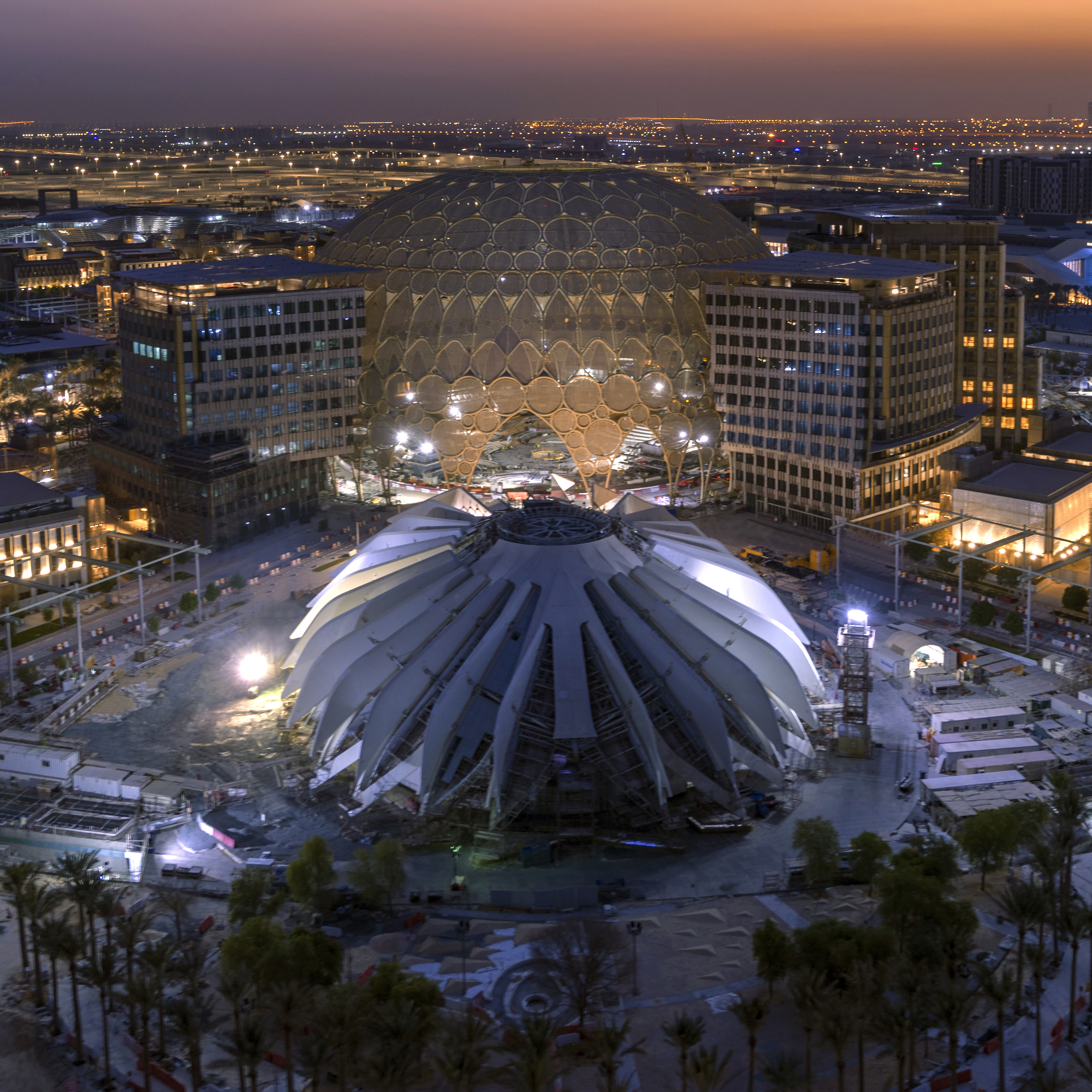
Our human visual spatial systems tend to focus on objects to draw us in first, so “awe-bjects” with a wow factor like the pavilions of UAE (pictured above), Luxembourg, Russia, and the U.K. (pictured below) captured our attention. Calatrava’s biophilic, bird-like UAE Pavilion and Es Devlin’s canted and full-frontal UK Pavilion were Instagram- and Pinterest-worthy.
Meanwhile, the Luxembourg Pavilion’s slight and stark Möbius ribbon stood out against showier installations. The Japan, Pakistan, and Poland pavilions also figured strongly by propagating orderly patterns against a chaotic backdrop.
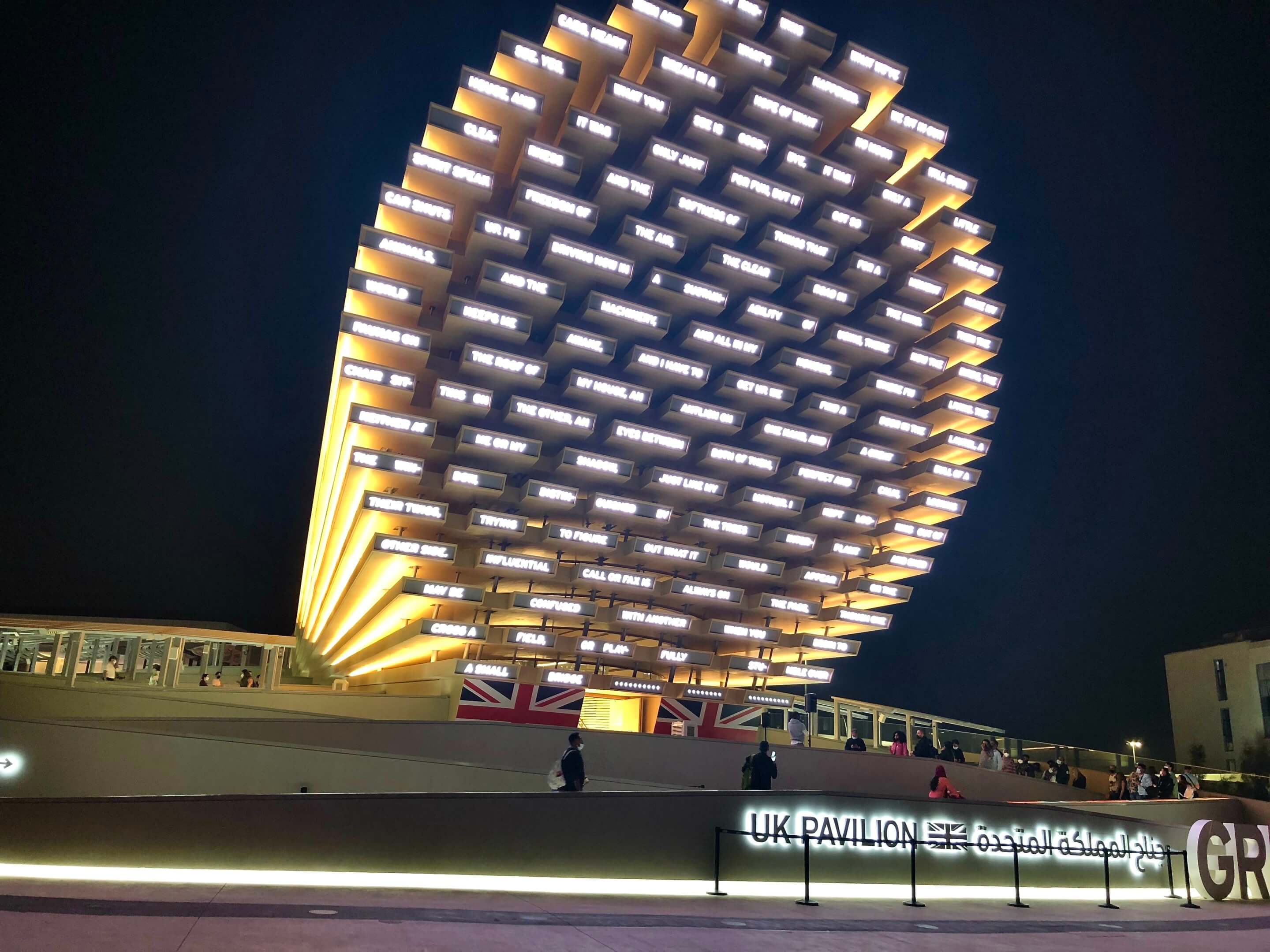
Radical, aspirational advances in building construction technology (or in articulated forms) are some of the futuristic payoffs an Expo can highlight. We anticipated experiencing the most innovative technologies in AI, and VR/MR/AR. The Saudi Pavilion broke three Guinness World Records for size and scale. Using design as a diplomatic tool, their pavilion is a paean to the country’s forward-thinking vision. We applaud Morocco’s revisit with its rammed earth technologies stacked like a Bauhaus jumble, pictured below. But a lot of recycled AV and re-discovered construction technologies seen at previous Expos featured a bit too prominently. Some think that if it worked before, it might be worth repeating bigger and better, but recycled AV and re-discovered construction technologies seen at previous Expos featured a bit too prominently.
We were excited, meanwhile by the UAE’s hydraulic cantilever wings, which are adjustable to local climatic conditions, and the UK Pavilion’s attempts to merge emerging AI technology into a poem. They all were brave and bold, if not quite resolved. They fired up the possibilities of dynamic building facades—as well as what moves us from within.
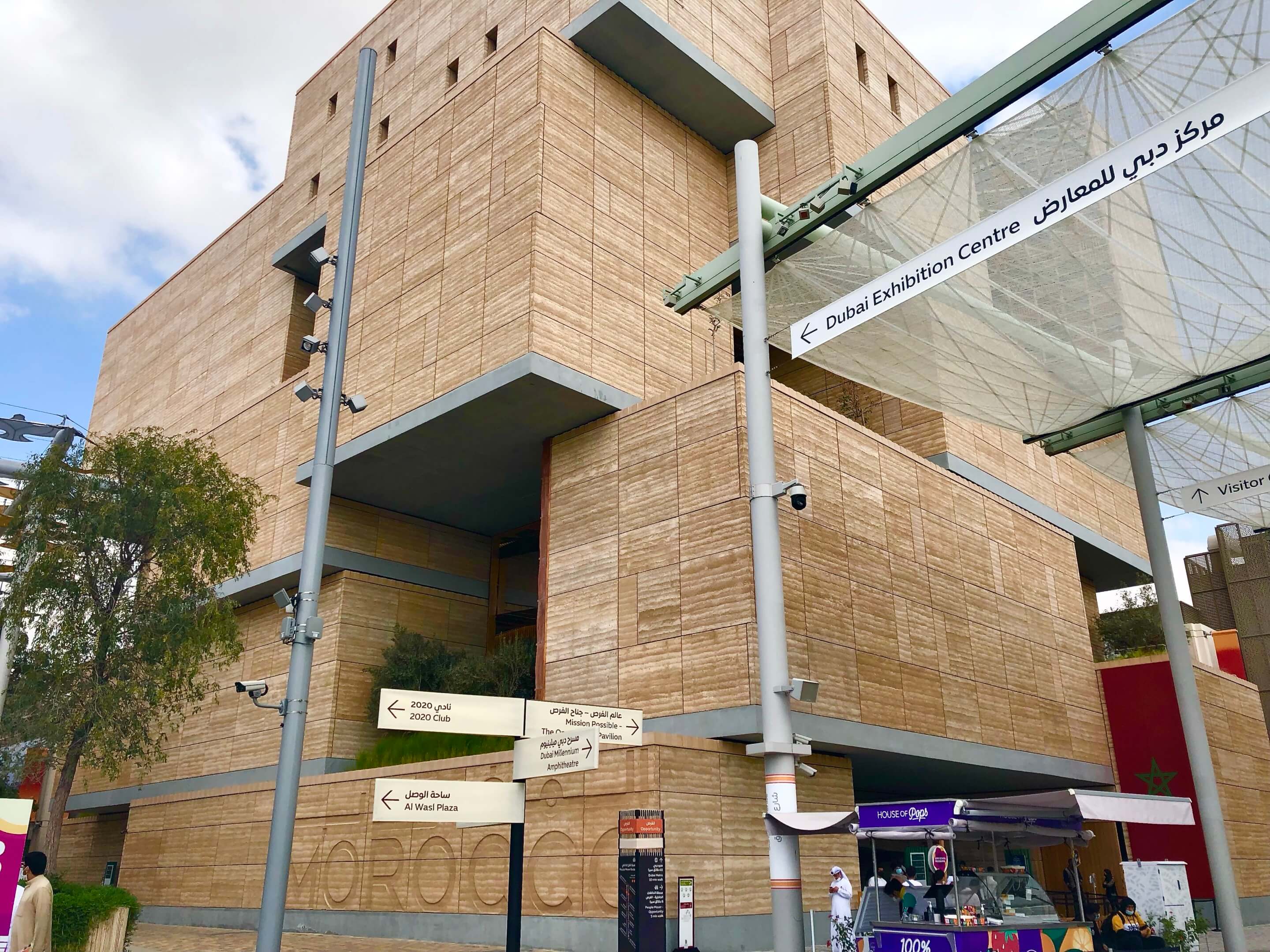
An experience that connects directly through the body will create more lasting memories. This leads to our last category: personal connections that produce immersive environments and authentic artifacts. Several pavilions did this in their own way. These pavilions (some more comprehensively than others) created distinctive (emotional, psychological, sensory) experiences. Kazakhstan’s was singular with its live musical dance performances: traditional folk outside their entrance to lure people in, and a Cirque du Soleil–like interactive ballet with a robotic arm as the main attraction inside. Singapore’s recreation of a tropical microclimate, pictured at top, was a figurative and literal oasis in the desert. Oman scented its pavilion with frankincense. The audio-visual surround-sound of Israel’s “Beats” encouraged audience participation. Switzerland’s fog (recalling its Expo 2000 Blur Building), and the USA Pavilion’s presentation of Thomas Jefferson’s copy of the Quran Koran and a 3.75-billion-year-old moon rock provided some genuine moments of haptic engagement. Finally, Finland’s pavilion diplomatically encapsulated international collaboration and goodwill in an architectural metaphor—a material convergence of first snow and nomadic tent, its block-like fabric exterior concealed an organic wood core. Echoing its harmonious relationship with nature and espousing “happiness,” visitors are enfolded in evocative light and exquisite human craftsmanship.
“Where shall we go?” A pivotal moment in Truman Show protagonist Truman Burbank’s awakening might be an allegory of our own. As Expo 2020 closes at the end of March, what might we expect for the future? Perhaps an answer was captured best in people’s playful interactions with the child-sized AI robots designed by a leading Chinese digital transformation pioneer. A battalion of 162 robots roamed the expo site greeting, servicing, dancing, telling jokes to the delight of children and adults. At the same time, a repeated roar of military planes as they scrambled over the fairgrounds could not be ignored.
This contrast provokes questions. Are we witnessing a harbinger of a utopian future or a digital Trojan horse? And what is the impact of architectural excellence as a communication tool for public diplomacy?
The power of expo architecture is in its visionary, technological, and human connections. The architecture of successful national pavilions uses an immersive language as effective as storytelling and music to connect to people. Navigating between visceral and visionary realms, architecture communicates using the elements of substance and space to impact human emotions. The best designs move a lot of people in more ways than one. The communication power of architecture is as old as civilization. It’s a universal human language, but it’s not well understood by those outside the design world. The highest quality design at World Expos is an important opportunity to influence and engage the people of the world with optimistic, factual messages about a country with international audiences on a real-world stage.
(Full disclosure: Our team advised the USA Pavilion team to bring artifacts—the moon rock and Jefferson’s Quran —to the Expo Dubai. We emphasized the importance of allowing visitors to touch the moon rock.)
Mina Chow FAIA, NCARB is Adjunct Associate Professor at USC School of Architecture, Faculty Fellow at the USC Center on Public Diplomacy
Beverly Payeff-Masey is a design historian and Director of the Masey Archives NYC.









